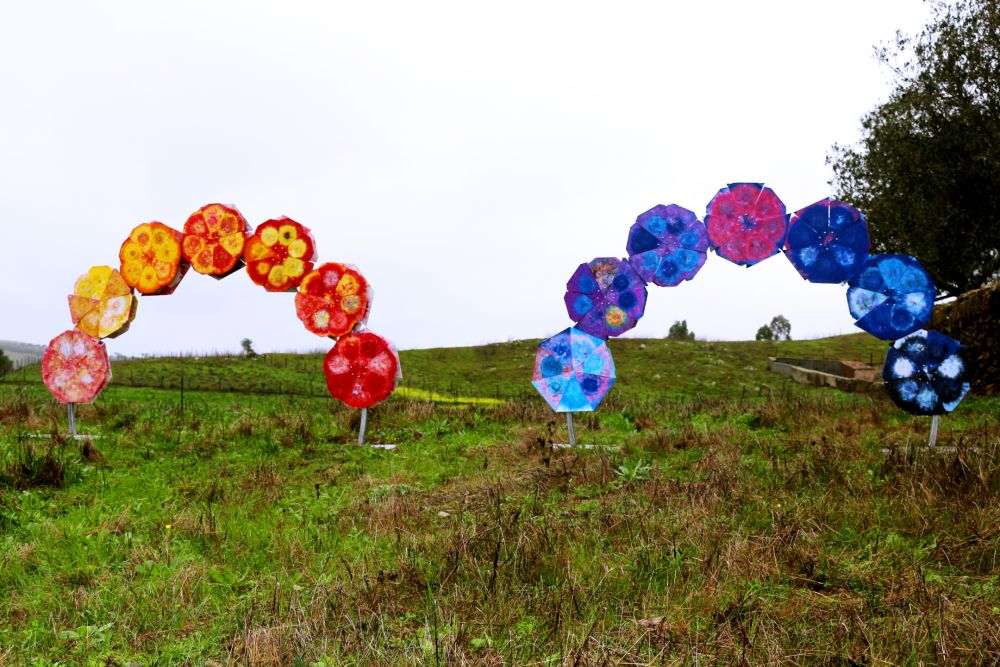Lelia Byron has been selected as the AER artist in residence at Banff Arts Centre, Canada
Founded in 1933, Banff Centre for Arts and Creativity is a learning organization built upon an extraordinary legacy of excellence in artistic and creative development. What started as a single course in drama has grown to become the global organization leading in arts, culture, and creativity across dozens of disciplines. Set in the stunning Canadian Rocky Mountains, Banff Centre for Arts and Creativity aims to inspire everyone who attends the campus – artists, leaders, and thinkers – to unleash their creative potential.
Set up by Professor Lucy Orta UAL Chair of Art for the Environment - Centre for Sustainable Fashion in 2015, The Art for the Environment International Artist Residency Programme (AER) provides UAL graduates with the exceptional opportunity to apply for short residencies at one of our internationally renowned host institutions, to explore concerns that define the 21st century – biodiversity, environmental sustainability, social economy, and human rights.

Read Lelia Byron's successful residency proposal:
I am really excited about participating in the Banff Plastic Thematic Residency because it so specifically aligns with my research interests and creative projects of the past year. I see the residency as a great opportunity to learn from and discuss with other artists working within the same topic. During the residency, I would like to use plastic waste to create installations that reconstruct the global plastic system. In an inverse problem, researchers work backwards by looking at partial data to try to understand the full model or system. Imagine trying to construct a complete image with only a few image fragments. The installations I would like to work on try to reconstruct the system from the effects, in this case the plastic waste. In doing so we can learn a lot about how plastic is used, produced, consumed, and disposed of, but also about societal systems such as values, interests, routines, etc. In my creative practice, I am interested in exploring different types of narrative, and I see these plastic installations as a way to explore spatial narrative.
I envision the installations as a kind of physical map that has to be walked through and explored.
This fall, I researched and experimented with creative plastic recycling. As the outcome of this project, I made two outdoor sculptures, titled Plastic Dreams: Sunrise and Sunset , which were installed at a town entrance. The sculptures were made from hundreds of pounds of plastic which I washed, sorted by type and color, shredded, and then molded into hundreds of individual parts with a DIY manual injection machine. Turning used plastic into a raw material for creative purposes at a small scale is a new and expanding area of research. Plastic has been recycled at an industrial level for decades, but creative plastic recycling is in its early stages. The Precious Plastic Machines, which I used to make these sculptures, are an example of this. They are hand built with easily found inexpensive parts and simplify industrial processes to recycle plastic. I am excited to share my experience working with recycling plastic to make art with others at Banff.
Throughout the past year, I worked on collaborative installations in Wastelanders Artist Collective. Together we make collaborative site-specific installations related to the theme of “waste.” Previous installation topics of our collective include fake recycling, coral bleaching, contemporary spirituality, and other environmental issues. In our most recent installation about fake recycling, we created a large spiral maze or “fake circle” out of plastic waste. Recycling happens when something is reused or re-purposed so that it can have another life cycle, creating a circular pattern. But, if only a small percentage of what people put in recycling bins is actually recycled, is the circle then simply a mirage? An open line, an open lie?
It’s understandable why plastic is everywhere: it’s cheap, strong, and malleable. Even though it’s everywhere, there is still a lot of confusion about plastic and about recycling plastic. Most plastic is not likely to be recycled. For starters, unlike glass and metal, which can be recycled many times, plastic can only be recycled at most a few times. Often people think about plastic as a disposable material, however, plastic is not a disposable material, but a durable one that can take hundreds to thousands of years to decompose. Historically speaking, only about 9 percent of all plastic ever made has been recycled. The rest of the plastic is either burned or sent to landfills (often landfills in a different country) where it often finds its way to the natural environment, frequently the ocean.
Herein lies a big opportunity then for artists and designers to be creative problem solvers and innovators. Artists and designers can recycle used plastic into long-term art and objects.
Furthermore, by researching and working with recycled plastic, artists and designers can develop an understanding of the principles of plastics and in turn sustainable alternative materials that can replace the massive amount of plastic produced.
One outcome of the residency would be for the project to further understanding of the plastic system. In considering the value of plastic, the project also explores what the value placed on plastic says about broader systemic values, routines, and interests, and what impact those values, routines, and interests have on our global home.
References:
https://ourworldindata.org/plastic-pollution#plastic-waste-per-person
https://www.theatlantic.com/science/archive/2017/07/plastic-age/533955/
https://advances.sciencemag.org/content/3/7/e1700782.full
https://www.sciencelearn.org.nz/resources/1543-measuring-biodegradability
https://blog.nationalgeographic.org/2018/04/04/7-things-you-didnt-know-about-plastic-and-recycling/
https://documentaries.io/coca-colas-plastic-secrets-dw-documentary/
https://advances.sciencemag.org/content/3/7/e1700782.full










